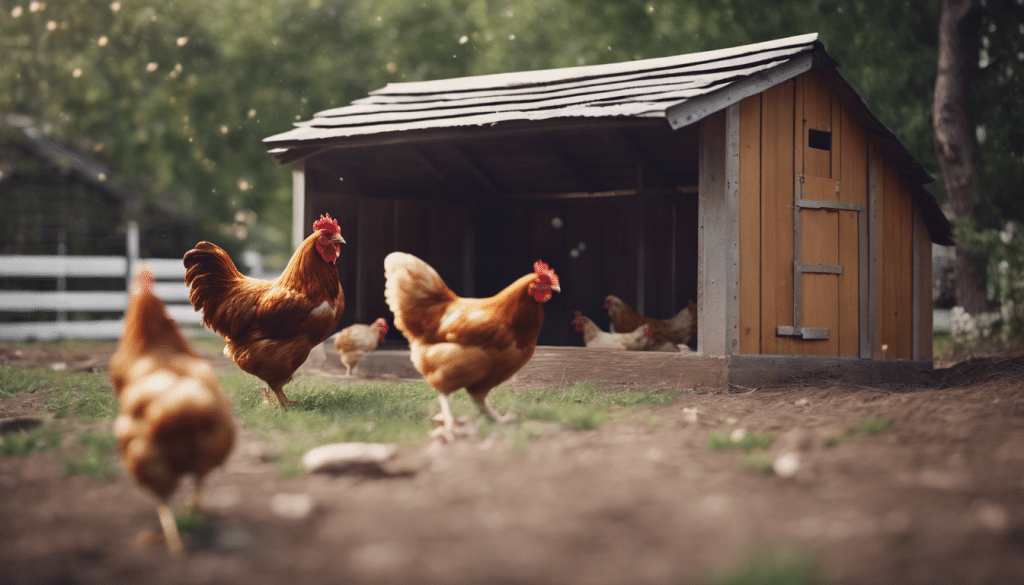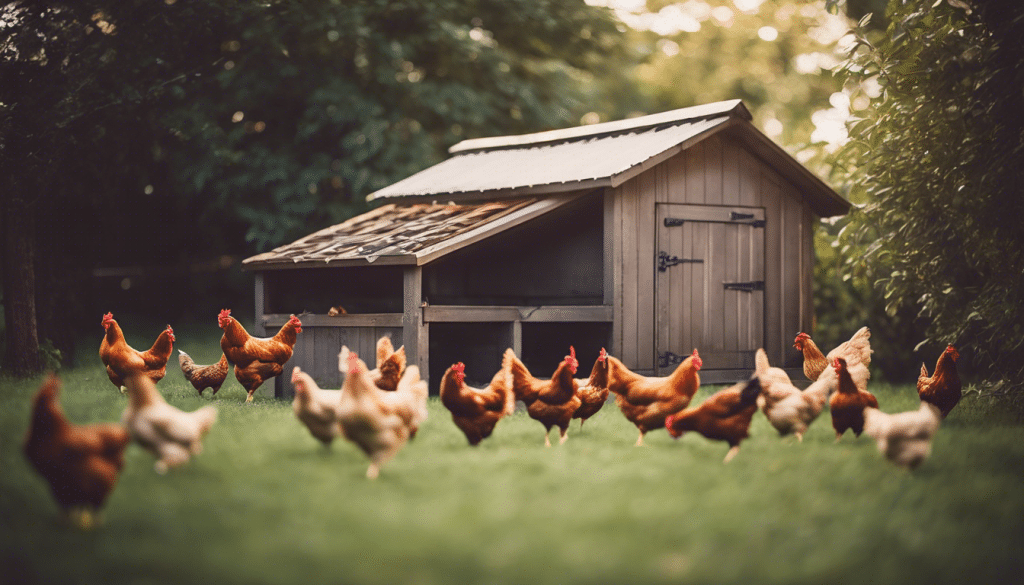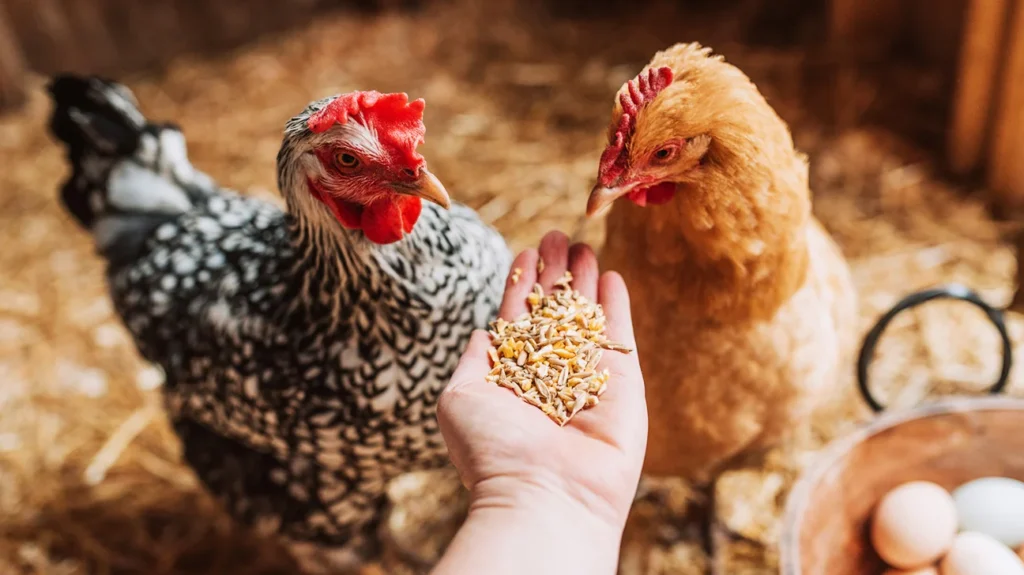A happy and healthy flock of chickens starts with a clean and well-maintained coop. Beyond the fresh eggs they provide, chickens can be delightful companions, offering entertainment with their antics and quirky personalities. But just like any pet, they require proper care to thrive. A clean coop is essential for their health and well-being, reducing the risk of disease and parasites, and promoting good air quality. This article will guide you through the essential coop maintenance tasks, from coop set-up to deep cleaning routines, ensuring your feathered friends have a comfortable and sanitary home.
Coop Design and Ventilation

Even before your chickens arrive, consider the design and functionality of your coop. Here are some key aspects to prioritize:
- Size: Ensure your coop provides ample space for your flock. A crowded coop can lead to stress, fighting, and pecking order issues. A good rule of thumb is to allocate 4 square feet of floor space per chicken.
- Ventilation: Proper ventilation is crucial for maintaining good air quality and preventing ammonia build-up from droppings. Design your coop with vents near the top of the walls, allowing fresh air to circulate while keeping drafts at bay. Opt for windows or wire mesh for additional ventilation during warmer months. For those just starting their poultry journey or looking to upgrade, exploring a variety of backyard chicken coops can help you find the perfect fit that blends functionality with your outdoor aesthetics.
- Nesting Boxes: Provide one nesting box for every 3-4 hens. Nesting boxes should be located in a quiet, secluded area of the coop, with soft bedding like wood shavings or straw.
- Roosting Bars: Chickens naturally roost at night. Install sturdy roosting bars at varying heights, allowing for a pecking order and preventing overcrowding.
Bedding and Coop Cleaning
Bedding is essential for absorbing moisture, controlling odors, and providing insulation for your chickens. Here’s how to manage bedding effectively:
- Bedding Options: Choose absorbent and comfortable bedding materials like pine shavings, shredded wood, or chopped straw. Avoid using cedar shavings, as they can irritate chickens’ respiratory systems.
- Deep Litter Method vs. Frequent Changes: There are two main approaches to coop cleaning. The deep litter method involves adding fresh bedding on top of existing bedding, allowing the coop to compost naturally. This method requires good ventilation and regular monitoring for ammonia levels. Alternatively, you can perform spot cleaning daily and remove all bedding for a complete refresh weekly.
- Spot Cleaning: Regularly remove droppings, wet bedding, and spilled feed to prevent odors and moisture build-up.
Deep Cleaning Routine

While regular spot cleaning is important, deep cleaning your coop is essential for maintaining a truly healthy environment. Here’s a breakdown of a deep cleaning routine:
- Frequency: Aim for deep cleaning your coop every 3-4 months, or more often if needed.
- Preparation: Move your chickens to a secure, well-ventilated enclosure.
- Removal: Remove all bedding and dispose of it properly (not in a compost pile used for vegetables).
- Scraping: Scrape away any droppings or debris crusted on the coop floor, walls, and nesting boxes.
- Scrubbing: Scrub all surfaces of the coop with a disinfectant solution safe for poultry. A popular option is a diluted bleach solution (1 part bleach to 9 parts water). Wear gloves and ensure proper ventilation while using disinfectants.
- Drying: Allow the coop to dry completely before adding fresh bedding. Sunlight is a natural disinfectant, so open the coop door to allow sunlight in if possible.
Additional Tips for a Healthy Coop Environment
- Feeders and Waterers: Regularly clean and disinfect feeders and waterers to prevent the build-up of mold and bacteria. Consider using nipple waterers, which minimize water contamination and spillage.
- Dust Bath Area: Provide your chickens with a dust bath area inside or outside the coop. Chickens use dust baths to keep their feathers clean and free of mites. You can use sand, dirt, or a commercial dust bath mix.
- Biosecurity: Biosecurity refers to practices that help prevent the introduction and spread of diseases. Here are some tips:
- Minimize contact with your chickens after being around other poultry.
- Wear clean clothes and shoes when entering the coop.
- Avoid introducing new chickens to your flock without proper quarantine procedures.
- Pest Control: Regularly inspect your coop for signs of pests like mites, rats, or mice. Diatomaceous earth is a natural and safe way to control mites and other insects in the coop.
- Regular Inspections: Perform weekly inspections of your coop for any signs of damage, loose boards, or potential predator entry points. Address any issues promptly to maintain the structural integrity and security of the coop.
Conclusion
Maintaining a clean and healthy chicken coop is essential for the well-being of your flock and the success of your poultry-keeping endeavors. By adhering to a regular cleaning schedule, ensuring proper ventilation, implementing pest control measures, providing adequate space, conducting regular health checks, maintaining clean water and feed, and securing your coop against predators, you can create a safe and comfortable environment for your feathered friends. With proper care and attention, your chickens will thrive, and you’ll enjoy the benefits of fresh eggs, pest control, and the joy of raising happy and healthy birds.






